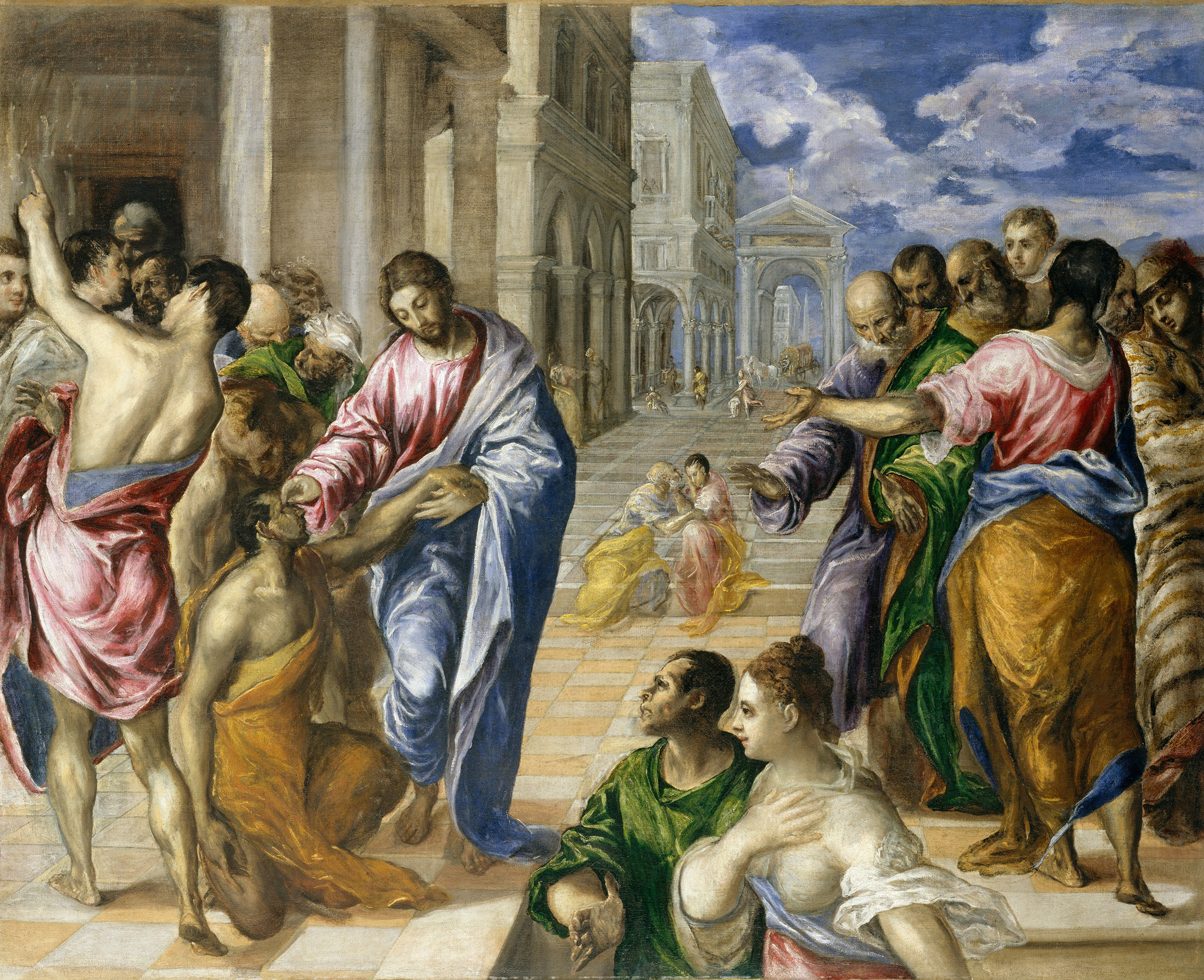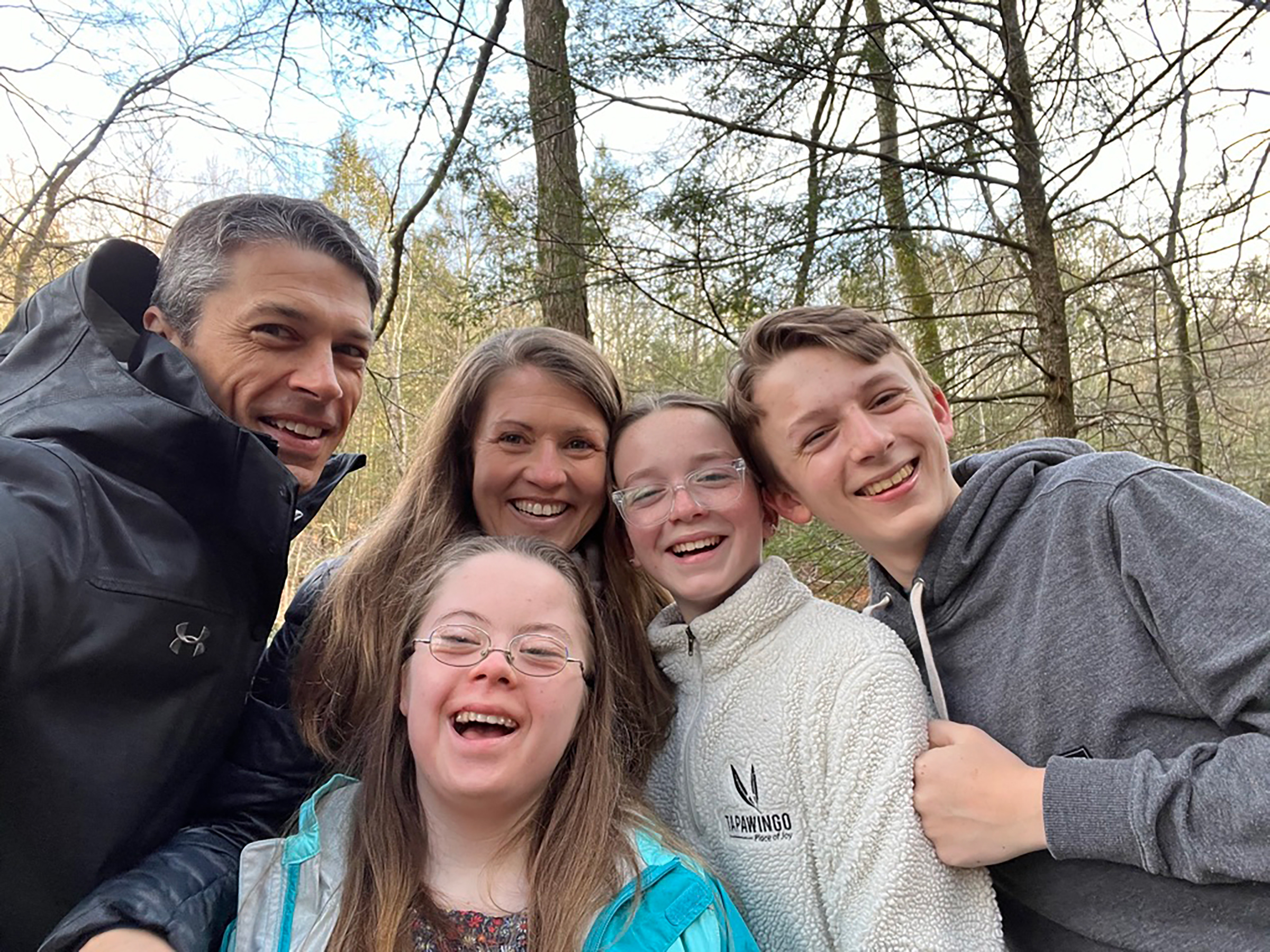
Before our daughter Penny was diagnosed with Down syndrome at birth, I didn’t know I was biased against people with disabilities. But gazing into my baby’s deep blue eyes and hearing the words “intellectual disability” and “developmental delay” brought up a host of emotions I never expected to confront with the birth of our first child. Grief. Shame. Fear.
I didn’t have any friends with disabilities. I prized academic learning. Efficiency, productivity, and measurable accomplishments gave me a sense of value and purpose in the world. I assumed that a life defined by slower development than typical kids, with greater vulnerability and more obvious needs, meant a life of lesser value and uncertain purpose.
American culture, with our emphasis on individual achievement, contributed to my implicit assumptions about a hierarchy of human worth. So did my Christian faith. I was a student Princeton Theological Seminary when Penny was born, and what I had learned in church seemed to echo what my culture told me: disability was a problem in need of fixing.
One Sunday morning, when two well-meaning men prayed that Penny would be “healed of this evil Down syndrome,” I recoiled internally but muttered Amen. Alternately, when people with Down syndrome were called “angels,” I wondered whether the saccharine sentiment betrayed an inability to see children like Penny in their full humanity, with their flaws and blessings. I started to recognize that Penny was no more broken than I was, but other Christians talked about her need for healing as if it were different from mine.
When I turned to the stories of Jesus in the Bible, I initially encountered more examples of people with disabilities being reduced to problems. Time and again, Jesus heals people. The blind see. The deaf hear. The lame walk. In an instant. As if their bodies were simply broken and needed to be repaired by a cosmic miracle worker.
But then I learned that the word Jesus uses to say that a blind man has been “healed” is the same word Jesus uses when a woman falls at his feet with gratitude because she has been forgiven. This same word describes a man after his leprosy has disappeared and Zaccheus after he has given away half of his possessions. The root word in all these cases, sozo, reflects comprehensive restoration. It is a word implying that Jesus’ understanding of healing has to do with our entire beings—our bodies, minds, emotions, and souls.

I also began to notice that while Jesus’ healing demonstrates incredible compassion for individuals, it is not individualistic. Yes, Jesus heals a particular man with a withered hand and a particular woman who has been bleeding for twelve years. But in both of those cases and others, he makes sure that they present themselves to the religious authorities so they can be reintegrated into the fabric of social life. These actions prompt the question—was the problem in the bodies of the excluded individuals? Or was the problem in the communities that rejected or abandoned them?
This same question deserves consideration now. Families with children with autism, ADHD, developmental delays and behavior disorders are twice as likely to never go to church as families with typical kids. More than half of special needs parents report that their child with a disability has been excluded at church. And yet an overwhelming majority of parents of children with disabilities (90%) also say that the most helpful support they could find in a church community is a “welcoming attitude towards people with disabilities.” When I look at these data, I see communities perpetuating rejection, not individuals in need of fixing. I wonder whether that’s the way Jesus saw it, too.
I tend to equate health with pain-free bodies, and healing with biomedical fixes. Theologian John Swinton has noted that the biblical writers had no concept of health as we understand it in the industrialized western world. Swinton calls upon the Hebrew word shalom as the closest approximation to health. He writes, “Shalom is not the absence of illness, disease, or disability. It has to do with the presence of God . . . Healing always has first and foremost to do with connecting and reconnecting people to God.”
Jesus’ healings can be understood not only as a way to restore wholeness and health within individual persons, but also as a way to bring spiritual and communal restoration. He casts a vision in Luke 14 of the ones who will celebrate together at God’s table: the blind, the physically disabled, the poor. Their bodies are not changed before they are welcomed at the feast. They come to the banquet as they are. The healing comes through belonging, through celebrating in God’s presence together.
The ultimate indication that Jesus’ healings are not mere expressions of ableism comes through the stories of his own death and resurrection. As Nancy Eisland has written in her groundbreaking work, The Disabled God, Jesus experiences disfigurement and disability while dying on a cross. According to the writers of the New Testament, Jesus carries the scars of that experience with him even in his resurrected state. Disability is not erased or ignored when he conquers death. The scars remain. Jesus even points to those scars in order to help his disciples understand who he is. In this sense, the resurrected God is eternally defined by disability.
Sixteen years ago, as I held Penny in my arms in the hospital, I wondered out loud: “Is Down syndrome a manifestation of sin in the world?” I saw Penny’s condition as an instance of God’s good creation gone wrong. My word for that was sin. Our biomedical word for it is defect or disorder.
My mother was gentle when she said, “The only sin I see in Penny’s birth is in how we respond to her.”
Mom didn’t know she was offering me what scholars call the social model of disability. She didn’t know she was affirming a truth I would eventually come to recognize in Jesus’ own interactions with people with disabilities. She just knew that her granddaughter was no more the product of sin than any one of God’s creations. Her words set me on a path to reimagine what it means to know Jesus and what it means to be human. Her words helped me see that all of us are in need of God’s healing, and that Jesus’ healing anticipates our need to believe our own belovedness and belong to a community.
For every Christian who gives thanks on Good Friday and rejoices on Easter, we celebrate a God who has made us well not by erasing our disabilities or fixing our bodies, but by affirming the goodness of our bodies in all their limitations, brokenness, disability, and need. We look to a God who heals us not by changing us but by inviting us to know our belovedness.
We celebrate a God who welcomes us all to the table as we are.
More Must-Reads From TIME
- The 100 Most Influential People of 2024
- The Revolution of Yulia Navalnaya
- 6 Compliments That Land Every Time
- What's the Deal With the Bitcoin Halving?
- If You're Dating Right Now , You're Brave: Column
- The AI That Could Heal a Divided Internet
- Fallout Is a Brilliant Model for the Future of Video Game Adaptations
- Want Weekly Recs on What to Watch, Read, and More? Sign Up for Worth Your Time
Contact us at letters@time.com